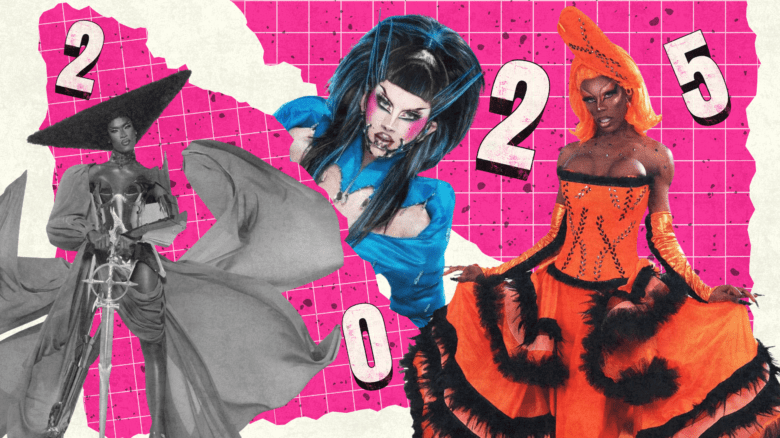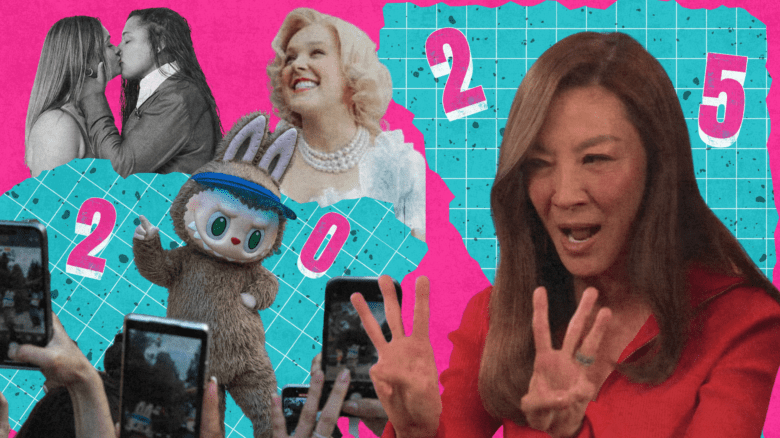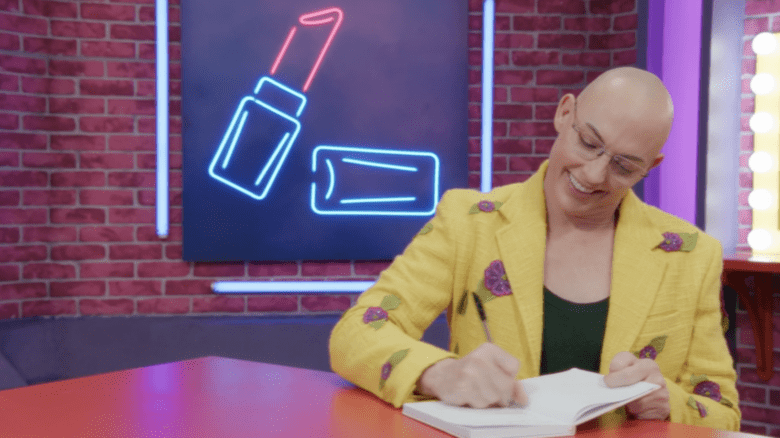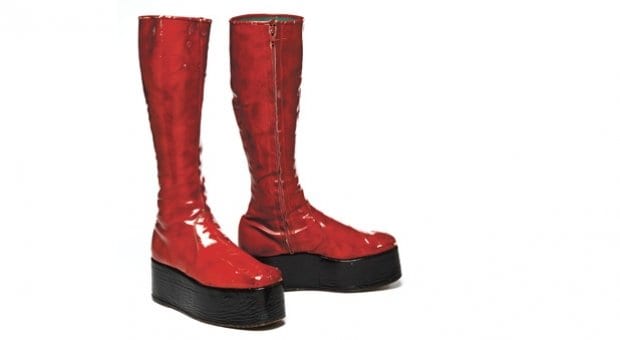
Aladdin Sane tour platform boots. Credit: Masayoshi Sukita
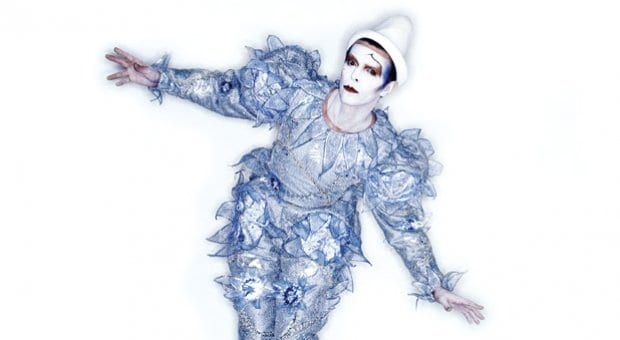
Scary Monsters photo. Credit: Masayoshi Sukita
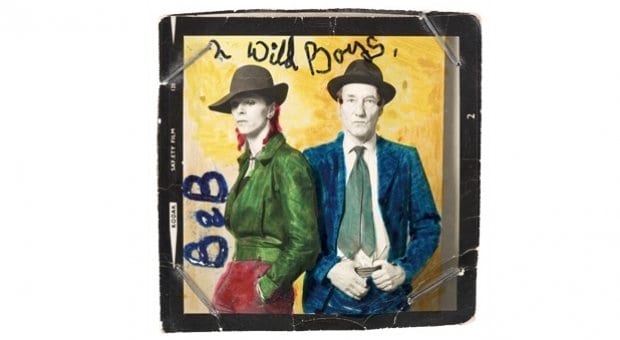
David Bowie and William Burroughs. Credit: Terry O’Neill
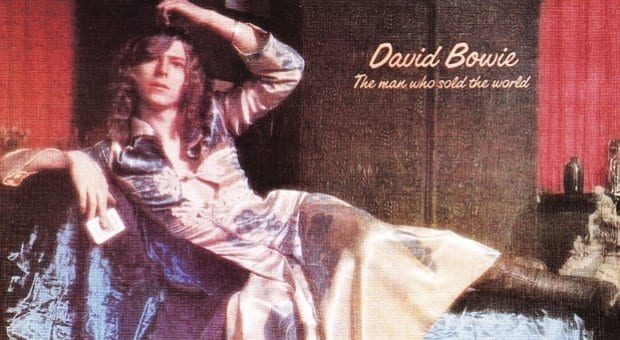
The cover of The Man Who Sold the World. Credit: Terry O’Neill
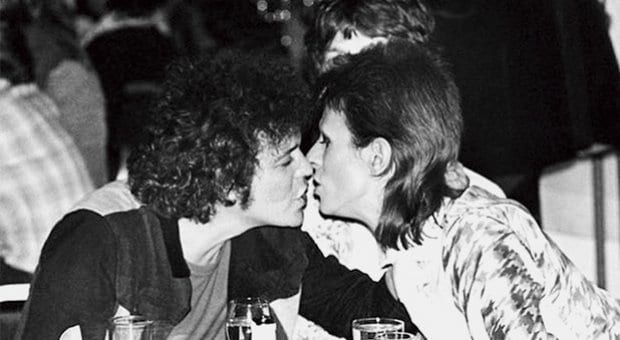
Kiss with Lou Reed. Credit: Terry O’Neill
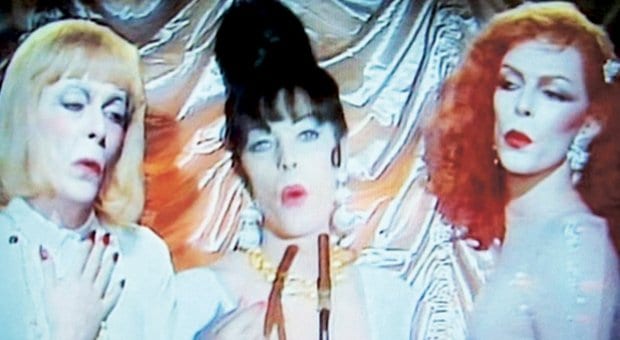
The song “Boys Keep Swinging.” Credit: Terry O’Neill
David Bowie Is features 60 of Bowie’s costumes, dating right back to his teens, but it is not a fashion show.
“What’s astonishing about the exhibit,” says curator Geoffrey Marsh, “is that one man could wear so much that is so varied and still look good. Even in Labyrinth as the Goblin King. Of course, he has a 26-inch waist and is gorgeous — and was always aware of it. He conceived of creating oneself as a character, and it’s one of the most insightful things of the last century.”
The exhibit was created by the Victoria and Albert Museum in London, England, and Marsh, the director of the V&A’s theatre and performance department, is happy to explain the excursion into pop territory. “The museum is not about Queen Victoria; it is the national museum of art, design and performance. David Bowie fuses all of the above. All the design work he did himself. Even if he didn’t create the actual covers, costumes and set designs, he came up with the ideas. We have the original sketches for the video ‘Ashes to Ashes’; it was all worked out in his head beforehand.”
Marsh and co-curator Victoria Broackes were able to sift through the David Bowie archives — Bowie, apparently, saves almost everything and employs a full-time archivist — which contains more than 75,000 items. From the treasure trove they selected the costumes and more than 300 objects. There is even a Canadian connection: “a small model, about a foot and a half across,” Marsh says, “of the set of the 1974 tour in support of Diamond Dogs. The tour started in Montreal, but the set was destroyed as the tour went along. It was progressively simplified, and tragically, the show was never filmed. It seems weird now, when filming big shows is so common.”
Bowie had no input in the selection of the exhibit’s contents. “I’ve never met David,” Marsh says. “And the archivist only checked for historical accuracy. We only had 10,000 square metres; by the time you spread the costumes around and then add all the audiovisual elements, there’s not a lot of space. We had to be very selective. But of course, there are all the well-known things, the Ziggy Stardusts.”
Marsh is coy about Bowie’s sexuality — “Nobody really knows except him” — but is effusive about Bowie’s influence on gay identity and liberation. “You have to rewind to ’63, when David was 16 and living an ordinary life in an ordinary house in an ordinary suburb and attending an ordinary school. Homosexuality was illegal until 1967, but in ’64 to ’67 the idea of looking inside yourself was on the top of the social agenda. It wasn’t just through psychotherapy, but also through drugs — LSD was legal in England at that time, the doors of perception and all — and through Eastern religions, but especially through sex. It wasn’t about sexual liberation; it was about exploring who you were in a new way with multiple partners and experimentation. There was an intensity about life; everyone was in the sweet shop, so to speak.”
According to Marsh, Bowie was same-sexually precocious. “In ’67, David was a Mod. The Mods were very male-oriented; it was all about showing off to other men. And he recorded ‘London Boys,’ which is about walking down Wardour Street and picking up amphetamines for the first time. At that time, there were no overt gay gathering places, but the song is full of sexual undertones. In his teens, David was already able to pick up the sexual tension of the times. By 1968, he was studying with Lindsay Kemp and was part of his mime troupe.” Kemp was as out as it was possible to be in those times, and his productions were extremely homoerotic, including his dance piece Flowers — based on Jean Genet’s novel Our Lady of the Flowers — which shocked Toronto in 1978. “Their involvement was not necessarily sexual. No one knows, but at that point, Bowie was involved with Hermione Farthingale, a classically trained dancer, but it was very passionate. And that got David into theatre. Before then, rock and roll to him had all been about sweat, like Springsteen, but theatre was about fakeness, costumes and being other people.”
Marsh also has a theory about “the famous interview where he said he was gay when obviously he wasn’t; he was married, and his son had just been born. His father was a PR manager for a big charity, and David worked in an ad agency. He’s rather dismissive of that part of his life, but usually when David is dismissive of something, it is important. It was the 1960s and very Mad Men, and David just got it: you can manipulate people, and he’s spent the last 50 years proving it. He realized you could twist them around his finger, and he thought, ‘What is the most outrageous thing I could say?’ By provoking a reaction he built a career.” A career that continues in the same vein; Marsh points out that Bowie’s video for “The Next Day,” released in the supposedly un-shockable year of 2013, was condemned by the Catholic League and temporarily pulled from YouTube. Marsh says with a laugh, “He’s 66 and his recent videos can’t be put on in many countries. They’re not offensive, but they are deeply subversive. They deal with the nature of sexual ambiguity, and that is simply unacceptable. He’s possibly more subversive than he was in the 1970s — who else is interrogating that territory? There are lots who do plays and protests, but in terms of a single person who can at 66 still push those buttons …”
Bowie later recanted his bisexuality and enthusiastically embraced heterosexuality, though he never discarded his androgyny. “The gay community has never forgiven him,” Marsh says. “But David has always been fond of outsiders and a catalyst for change. He doesn’t get involved in politics, but he says to look inside yourself and then be it. And that’s the most subversive thing you can do. He was someone who said it was okay to be yourself and visually a freak show. At the time, most of Britain was about coal mining; men were men, and the safety nets were trade unions and churches. Everyone was kept in narrow confines and had to conform. David was saying, ‘Just be who you are. The only pure loyalty is to yourself. I’ll find another safety net.’ And gay liberation was one of the possibilities. In a hundred years’ time, that is what he’ll be remembered for. His music is great, but …”
More than 300,000 people attended the exhibit in London, and Marsh warns, “It’s not the David Bowie story. We didn’t want to do a retrospective; after all, he’s still alive and creating. In a curious way, he is a shamanistic character, a lightning conductor; people wind up bringing their own views and interpretations to the exhibit. On some level it validates their own experiences. There are still large parts of the world where society is dominated by organizations, and as a cultural historian, I can tell you that the battle is far from over. David is interested in change almost just for change’s sake; he has a very short attention span. It’s not because he’s being difficult — he’s just interested in the process. And the people who see the exhibit realize that they are part of that change. David gets it that there is a future where you can be whoever you want to be.”
David Bowie’s seven gayest moments
1 The cover of The Man Who Sold the World (1970)
Not his most glamorous moment, but dowdy can be daring when it is a man in a dress in 1970.
2 Interview with Melody Maker (1972)
Bowie declared he was gay, but in hindsight it was almost certainly just promo for the nascent Ziggy Stardust character. By 1976, he was hedging and told Playboy, “It’s true — I am a bisexual. But I can’t deny that I’ve used that fact very well. I suppose it’s the best thing that ever happened to me.” Alas, in 1983 he told Rolling Stone, “I was always a closet heterosexual,” and in 2000 he attributed his sexual experimentation more to “a compulsion to flout moral codes than a real biological and psychological state of being.”
3 Kiss with Lou Reed (1973)
Following the final Ziggy Stardust performance there was a raucous genderbending party, and a snapshot of Bowie apparently kissing Lou Reed caused quite a stir (which is a surprise, as Bowie had just finished miming onstage fellatio on the much more attractive Mick Ronson). Bowie milked the controversy until 1993, when he claimed, “If you study the photo, I’m talking into his ear and he’s talking into mine. I’m quite a way over. But it was near enough to a kiss for the press, and they all printed it. We were supposed to have been kissing at that time anyway, so there was the evidence. No, I think Lou Reed is the last person in the world I’d want to kiss.” Nothing, however, explains why he agreed to participate in Reed’s debacle The Raven.
4 Possible affair with Mick Jagger (1973)
Bowie’s wife Angie claims to have caught the pair in flagrante delicto but also says, “I don’t think it was a big love affair. It was probably more drunken pawing.” Even gayer is the rumour, possibly started by the Divine Miss M herself, that the duo had an impromptu threesome with Bette Midler in a closet at Studio 54. And, of course, the pair’s collaboration on a cover of “Dancing in the Streets” (1985) is pure cruisy camp that is a field day for gay semioticians.
5 The song “Boys Keep Swinging” (1979)
The lyrical gem “When you’re a boy, other boys check you out” was accentuated by an official video featuring Bowie in various drag personas. It was followed by a Saturday Night Live appearance, with Klaus Nomi and Joey Arias singing backup and Bowie himself as a puppet with a hyperactive erection.
6 Appearance on Ellen (2004)
The content is very hetero — how wonderful Iman and the new baby are — but Bowie dresses gay street in a hoodie while sporting a very lesbian Justin Bieber haircut (before there even was a Justin Bieber) and admits that “at around 17, I realized I was a mime trapped in a man’s body.”
7 Cruising the internet (2013)
Bowie’s chosen internet handle is “Sailor.” He is not known to be a nautical enthusiast and by way of explanation says, “I think it’s something to do with solitude, freedom and travelling the uncharted waters … or something.” —Drew Rowsome
David Bowie Is runs Wed, Sept 25–Wed, Nov 27, at the Art Gallery of Ontario, 317 Dundas St W. ago.net
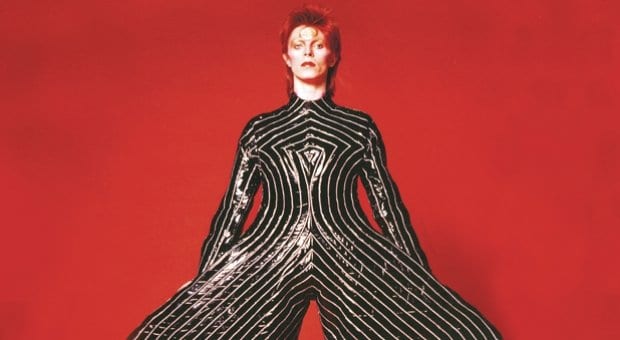
 Why you can trust Xtra
Why you can trust Xtra